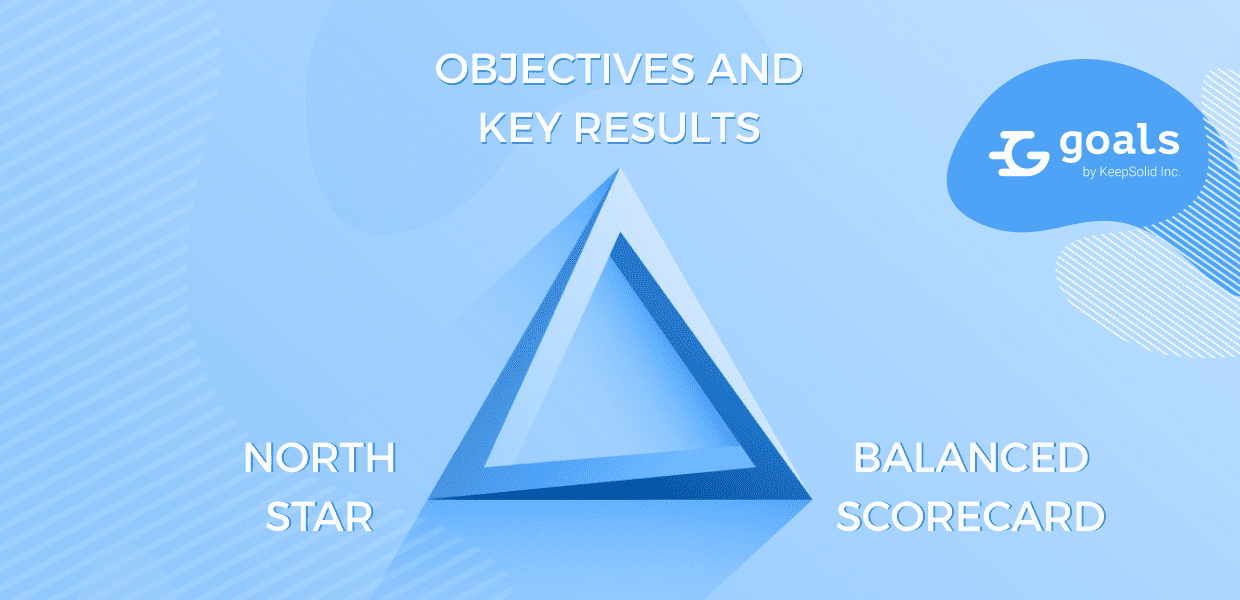What Is An OKR Goal
There are many methods of business management, such as SCRUM, Agile, and KPI. Some of these approaches are focused on organising processes and developing horizontal links. OKRs excel in synchronising teams with business goals - so each employee understands their area of responsibility and tries to make the maximum contribution to the overall result - to do what the company expects of them.
Let's see how it works.
Brief history of OKR
Andy Grove developed the OKR (Objective and Key Results) method in 1968 while he was the CEO of Intel. The MBO (Management By Objective)method created by Peter Drucker in the 50s served as a basis for the OKR.
Then John Doerr came to Intel in 1974; he studied the OKR methodology, and then as an investor’s adviser, he suggested using this approach at Google. Google founders Larry Page and Sergey Brin appreciated this methodology and used it at Google to this day.
What are the principles underlying such an interesting method?
General OKR principles:
-
Transparency and honesty.
Company goals and team key metrics are available to everyone in the company. -
Limited number of targets.
Objectives quantity should be around three to five (ideally per quarter). -
Bottom-up goals forming.
The teams themselves should set about 60% of the goals in a company. -
No intrusion.
Management should always make arrangements with teams on the priorities and goals evaluating methods. -
Flexibility.
Objectives are necessarily adjusted depending on the changes in the business environment. -
Ambitious goals.
If you strive for more, then the result will be more significant. -
OKR - is an instrument.
The methodology is designed to help employees. This is not a training manual for certification. -
Patience.
Failure is part of the journey. The trial and error phase is inevitable.
With the correct implementation of OKR in the company structure, all employees must understand the goals of their work and company expectations. This method increases the transparency of the company, which gives employees motivation and increases their efficiency.
This is what can be said directly about the philosophy of the method.
Let's now consider for whom this method suites better:
-
First of all, this framework is suitable for small startups, where the team needs to work as a single mechanism.
This is important both for team efficiency and for the investors.
-
Next, we have medium-sized companies that are currently going through a growth stage.
OKRs will help you set up and synchronise your company vertically and horizontally, helping you organise effective communication between departments. -
This method will be helpful for large companies as well.
The methodology increases team union by encouraging the independence and autonomy of individuals.
Everyone works and is responsible for the results themself, but the sake of a collective goal.
OKR opens new paths for growth in any company and allows you to discover ambitious and motivated people.
Let's take a closer look at the very essence of this method.
Objective and Key Results consists of two components that look like this:
-
“Where do we want to go?” Or “What do we want to get?”.
The answer to this question is itself Objective. -
“What is the path to our goal?”
The answer to this question will be our Key Results.
The trick is that your main goal should be a certain "margin of safety". It must be something ambitious (stretch goals).
There are no strict requirements for achieving global objectives in OKRs; reaching the goal for 70-75% of the plan can be considered as a success. Goals set “for growth” are needed as insurance against unexpected circumstances.
Theory is perfect and exciting, you say, but how can this be applied in practice?

OKR Reality or How to Use It
You might be thinking that since OKR is such a “simple” method, why is it so often heard that companies fail when they try to implement this method in their operations?
To answer this question, let's first look at the structure of the method.
OKR Structure:
-
The company sets from 3 to 5 global targets for the year and sets targets for each quarter.
-
Each team sets 3 to 5 goals, which must be harmonious with the goals of the company.
-
Employees, together with managers, set the same 3 to 5 goals that should be in tune with the company’s higher goals and team.
Thus, we see three levels of goals, from small to large, which makes the company's activities as straightforward as possible for an ordinary employee.

In practice, this method can be summarised in two points:
-
Synchronising goals vertically and horizontally allows you to connect the entire company. Big goals are broken down into smaller ones and divided into a tree shape while working to achieve a global destination.
-
The global goal is challenging but achievable, which creates a certain level of good tension.
How to successfully implement OKRs.
Before you take the first step in implementing this method, you need to realise and accept the fact that it will take time and effort.
Many employees and most low-performing employees will resist this process, as this methodology can quickly reflect the shortcomings of their work. Plus, as previously stated, OKR is a tool, which means you'll need to improvise and adapt it to your niche.
The process itself should start small - a mature, experienced and well-coordinated team is the best entry point.
After you learn from the example of this team about how to deal with the difficulties, you can move on to more global implementation. It will be possible to slowly transfer experience to other departments, subsequently link goals within the company, and set global goals vertically.
The most important thing is to convince the teams that this methodology will only add value to their job.
There is no single implementation scheme since everything dramatically depends on a particular company, but the plan may look like this:
-
Decide what you want to achieve with the implementation of this framework.
-
Decide which team you will start with and try to “sell” OKRs to them.
-
Connect more teams over time.
-
Set the End Point - Company OKR.
-
Connect more teams.
-
Assess and make any necessary adjustments.
Let's say you decided that you need an OKR method in your company.
How do you set goals? Where to start?
Goal setting in OKR
In the beginning, you should immediately define several complex Key Results for a certain period.
Then you need to split these goals between your departments or specific employees.
After this stage, you need to set KSF (Key Success Factors) for each of these goals in the amount of 3 to 5 pieces per goal, and this is necessary so that you can accurately measure your result and not going in blind.
At the stage of forming goals, you have three directions of communication:
-
Top-Down.
Needs-based goal scenario. Goals descend from leadership to the entire company and extend to all departments, teams, and employees. -
Side-by-Side.
Teams collaborate on their own to create shared OKRs in addition to global goals—a cooperation-based scenario. -
Bottom-Up.
It is when a good idea has grown into a goal of a team or even an entire business—a solution-based scenario.
It is crucial not to forget that OKR and setting its goals is a collective process.
Often, half or more of the goals will be set accordingly to a bottom-up principle.
It is essential to find shared opinion here, to determine the priorities and focus on them.
And finally, how to set goals?
Here are the main directions in this topic:
- Company objectives should be ambitious and challenging, but not impossible.
- Objectives should be clearly formulated and reflect the end state.
- The term for achieving such goals should be at least one quarter.
- Don't set more than five goals per quarter.
- Teams should be involved in the development and goal-setting process.
- Goals should be divided into ambitious and operational.
- Up to 70% of your goals are going to be based on a bottom-up scenario.
Finally, for a better understanding, here are some examples of OKRs for Online and Offline companies:
Offline OKR example:
Objective: Raise the awareness of our brand in your city.
-
Key Result 1: Increase the number of advertising banners in the city by 30% within two months.
-
Key Result 2: Increase visitors flow by 100 people per day.
-
Key Result 3: Conduct 3 promotions per month throughout the quarter.
-
Key Result 4: Raise sales by 25%.
Online OKR example:
Objective: Successfully launch the new version of our product.
-
Key Result 1: Get over 3 thousand new users.
-
Key Result 2: Raise user satisfaction rate by 20%.
-
Key Result 3: Develop innovative UI design within the next month.
We must admit that Objective has no metrics. Objective should sound like a dream and serve as a driver for teams. The main motto - “Simple and ambitious”.
On the contrary, Key Results must have metrics, preferably that reflect the start and end value, so that progress can be easily measured and evaluated.
When formulating OKRs, make sure the number of Key Results is sufficient and necessary to achieve the Goals.
Using OKRs is very useful and no less interesting for your employees, be patient and focused, and may your goals be as ambitious as you are!



